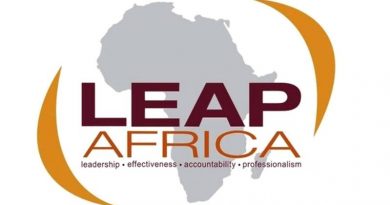WHAT ARE WE BUILDING? THE NEXT PHASE OF REAL ESTATE FINANCING IN AFRICA by Selwyn Blieden
For a long time, the most prominent players in the African property sector have been private equity or other institutional investors. It is also true that there has been an obvious gulf between demand and supply in all property sectors (commercial, industrial and residential) across many markets on the continent.
The investment proposition, often-repeated to prospective funders, regulators and local partners, was that by pioneering landmark projects international investment and development teams would go some way to bridge this gulf. But few of those presenting this thesis have shown the success they predicted for themselves and their investors.
Asset realisations have taken longer and have been less profitable than expected. Some institutions have chosen to exit direct African real estate investment entirely. With few exceptions, large South African REITs that expressed broader African ambitions have either closed their African operations or indicated that they intend to do so. Given its uneven performance record, an observer of the market might question the market-theses that seemed to be so alluring only a few years ago.
Despite this, we still believe that there is evidence to show that the African property market has evolved, just not in the way and for the segments previously expected. It is up to investors, financiers and other stakeholders to adapt their approaches to pursue the opportunities this market offers.
For the past years we at Absa have been tailoring our business approach to cater for the range of real estate investment activities that we have seen taking place in our target markets. This has meant that we have been monitoring a wider market than that represented by the large multi-jurisdictional players that for some years dominated African property media coverage and were most visible at industry conferences.
Our analysis shows that since the end of 2015 the domestic bank-financed commercial property market in our active African jurisdictions (which we identify as Botswana, Zambia, Mozambique, Kenya, Uganda, Tanzania, Mauritius, Seychelles, Ghana and Namibia) has grown in US dollar terms at a compounded rate of 9.5% per annum. This represents an acceleration in growth since the period 2012 to the end of 2015 the same market grew by 8.3% per annum.
This means that since 2012, and even more so since 2015, growth of bank-financing to many African property markets has been faster than the growth of the underlying economies in these jurisdictions. Such growth could only have been possible if some combination of the following factors had been in place: the number and size of bankable projects and clients has increased; banks have become increasingly willing to undertake property finance; and/or the currencies in which property loans have been denominated have strengthened.
In all cases the factors mentioned above are positive for the property markets we are targeting: either the broader economies in which they are located are strengthening (as indicated by stronger exchange rates) or the property finance markets are becoming more active and formalised.
It bears repeating that not all African property markets are alike and data covering multiple markets may often conceal wide-ranging differences between those markets and nuances within markets. In the case of the countries we have been studying, there are two where the bank-financed property market has actually declined since 2015. These are Mozambique and Uganda.
In Mozambique’s case the decline (of 8.8% per annum) would be expected given the broader debt-crisis in the country. In Uganda the decline has been an annual 2.1% — less than the decline in the local currency over the period and thus indicating a market that is, at least, growing in local currency terms.
The largest property finance market on our list is Kenya which on its own holds about 46% of the total commercial property financing pool within the markets we service. Its commercial property finance growth rate has been at 9.6% over the past years. Its currency has been relatively stable, ranging only from 99 to 105 Kenyan Shillings to the US dollar over the period. The growth has achieved is largely, therefore, a function of real growth in bank funding and property investment activity. In our experience, growth in this market has been led by market participants that would in South Africa or similar banking markets be classified as commercial or local corporate clients rather than institutional players.
In conclusion, it is evident that even though the most prominent segment of the investment-grade African property market has shown signs of strain, the broader bankable property market has been growing significantly and in the case of key markets such as Kenya, the growth is the result of real property activity and risk-taking.
For banks and other financiers, future growth may require broadening their target-range of clients and adapting their credit and service models for strong local players. For equity investors, potential focus may be on finding ways to get effective exposure to this same category of market participants. Opportunities exist for those who are willing to adapt their approach and their guiding beliefs regarding this market.
About the Author
- Selwyn Blieden is the moderator of the Investment Panel at the 6th Annual East Africa Property Investment (EAPI) Summit taking place on 10 & 11 April at the Radisson Blu Hotel in Nairobi.




